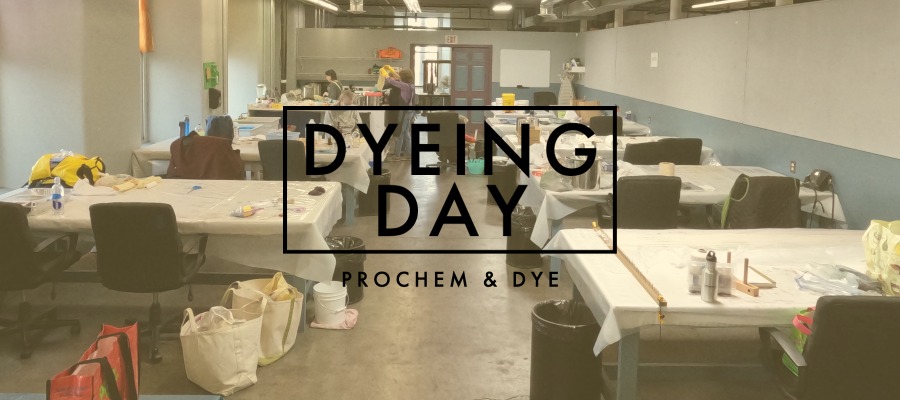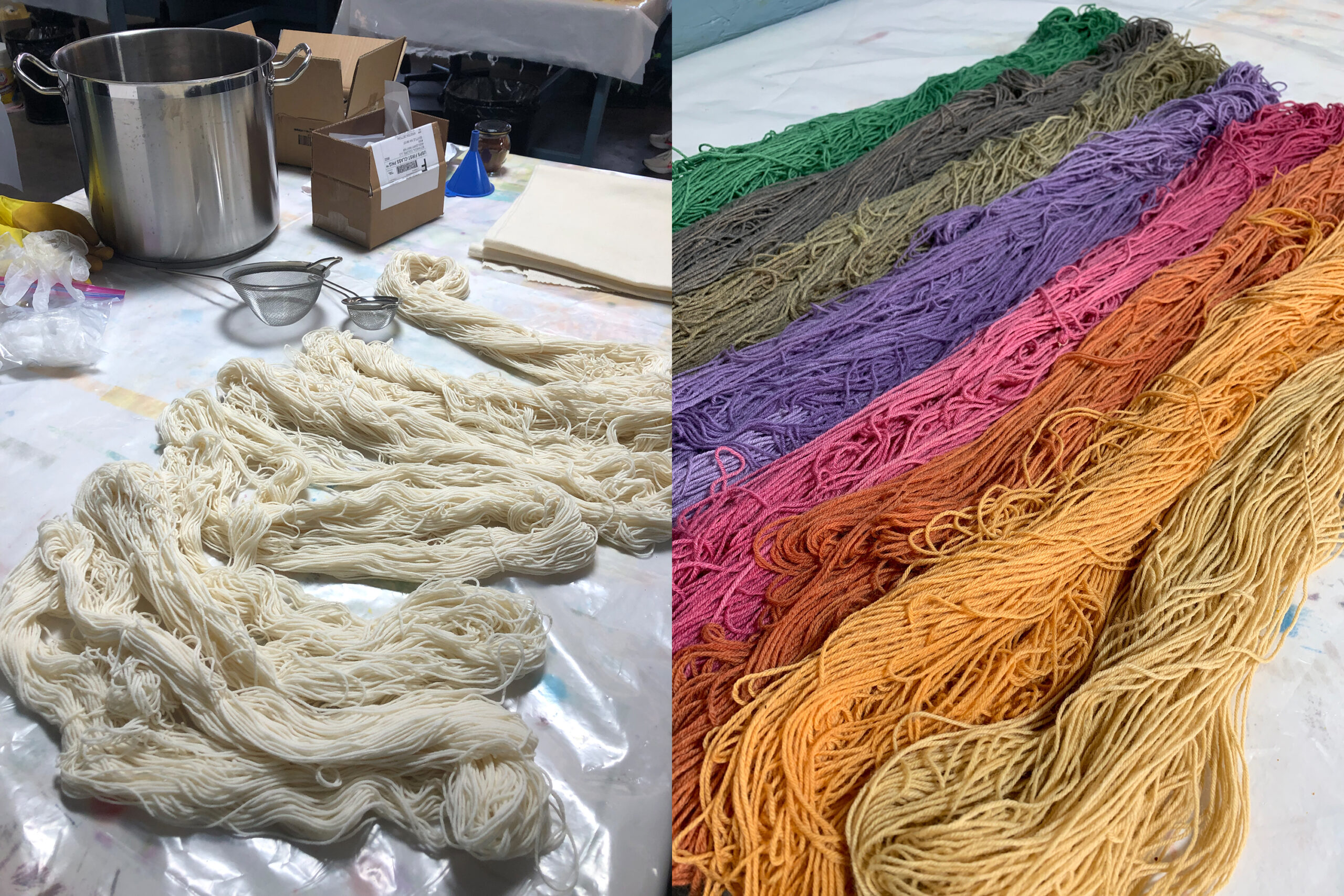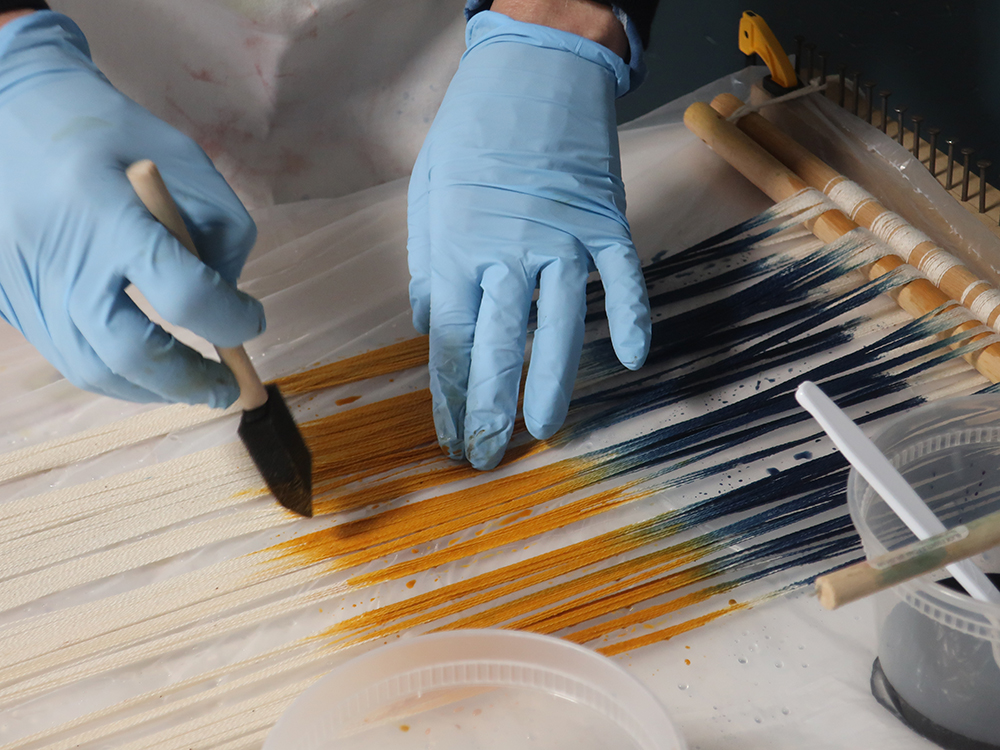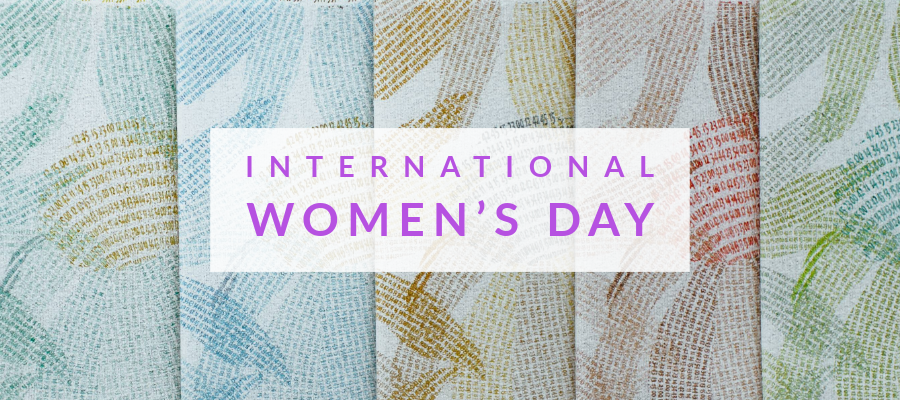
Inspiration Day: Dyeing at PRO Chemical & Dye
As winter loosens its grip on New England, our team was feeling the need for an inspiration day. Our small team works remotely, separated by about 90 miles. Technology makes it easy, but it’s nice to have real-life face time every couple of months. I had just spent two weeks on Kauai and was feeling relaxed and inspired. Kristen lived vicariously through my photos. We were both itching to put these good vibes someplace tangible, so we met up in Fall River, Massachusetts with a small group of textile friends. Together we took over the classroom space at PRO Chemical & Dye and spent the day dyeing together.
PRO Chemical and Dye manufactures a wide range of dyes for natural and synthetic fiber types with thousands of colors to choose from. In addition, they host incredible classes taught by renowned fiber artists as well as their knowledgeable staff. When no classes are scheduled, the classroom space is available to rent by the day. Dyeing is pretty messy and requires a lot of space and different tools. The ProChem space is equipped with big sinks for rinsing, burners for dye pots, a huge drying rack, and several long worktables. Plus, a separate section where you can break and have lunch.
Though ProChem makes great dyes, we both spent the day experimenting with natural dyes made by Botanical Colors. Kristen dedicated her time to dyeing skeins of wool yarn for use in punch needle art pieces. In this process, the wool skeins need to be scoured and mordanted before heading into the dye pot. Kristen experimented with mixing dyes and overdyeing skeins. At the end of the day, Kristen had a beautiful range of colors on eight different skeins. If you’ve ever wanted to try dyeing wool skeins, Kristen has a few tips.

Kristen’s Tips for Dyeing Success:
- Don’t shock your wool with super hot or super cold water. Take the temperature up and down slowly. If the fiber is too hot for too long will make the hand of the wool harsh.
- Don’t over agitate your skeins when they are in the pot. Too much agitation and the wool will start to felt.
- Try to use as big of a pot as you can. If the pot is too small it can lead to a stria look. This can be a beautiful effect, or it can feel like a frustrating mistake if you really want a solid, even look.
I spent my time painting a warp using Botanical Colors’ liquid natural dyes. For my warp, I used 10/2 Dye-Lishus cotton yarn. This yarn is 50% organic cotton and 50% mordanted cotton. It takes color beautifully and has a soft hand when woven. The benefit of this yarn is that there is no mordinating necessary before applying the dye. This was my second time painting a warp with this yarn and I’m still figuring it out, but have learned a few things along the way.

Kristin’s Tips for Painting Warps:
- Make the neatest warp possible. You don’t want to waste a lot of time getting your warp in order. I used warping pegs for this warp and wound it right on the table where I’d be painting. It made it easy to then space the warp out with a raddle at each end and my lease sticks in the cross.
- Be sure you’re fully saturating the yarn with the dye. I found wetting the warp first with a spritz bottle made this a lot easier. I worked with gloves on and really got my hands into the yarn to be sure the yarn wasn’t clumping together and keeping the inside dry.
- Have a plan ahead of time. Getting your warp situated takes time, getting all the dyes mixed and ready takes time, so having a plan for painting ready to go is super helpful.
I’ve painted warps before using ProChem dyes and have had a lot of success. For me, the jury is still out on the Botanical Colors liquid dyes for this purpose. I’m very much still in experimenting mode. My first impression is that it’s more challenging to get the colors I’m aiming for and the intensity I want. (If you’ve ever tried painting a warp with these dyes, I’d love to hear about your experience! Please DM me through Instagram.)
So what are we making with our dyed yarn? We’ll share photos on our Instagram accounts when we finally use the yarn and the warp in one of our projects. You can follow Kristen Dettoni here and Kristin Crane here.
Special thanks to Paula Stebbins Becker for organizing and The Indigo Squirrel’s Cathy Wilkerson for sharing her indigo vat. If you’re within driving distance of southeastern Massachusetts, check out ProChem. Their classes are excellent and this space is a dream to use for the day.
Share this post
Author
DESIGN/COLOR TRENDS AND AWESOME INFORMATION IN YOUR INBOX
Sign up for our monthly trend letter







